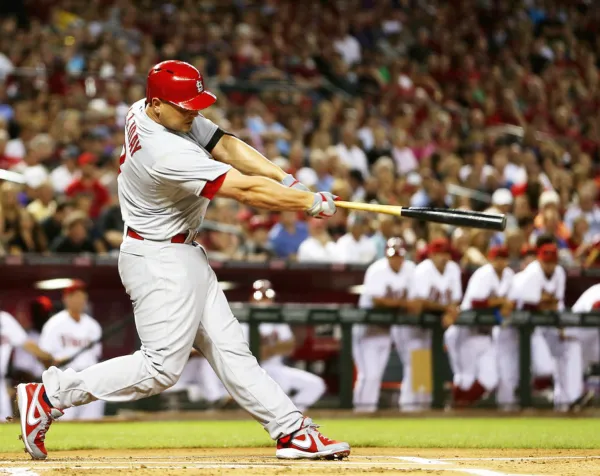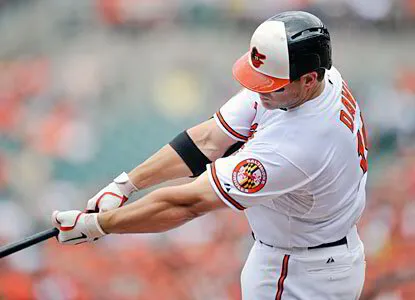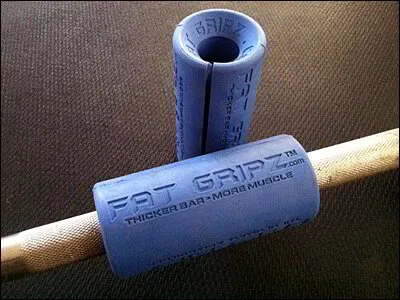Why is it that baseball has always been so infatuated with forearms.
- It’s the last link in the kinetic chain to the bat
- Lots of big league guys have big forearms. Never mind that they are the .01% of athletes at the peak of a professional sport and their genetics may have had a hand in that development
- Forearms are about the only thing that sticks out of a uniform
- Duh…..It’s the arm. Who doesn’t like looking yoked with beefy forearms
It’s amazing to me to read article after article in this day and age that actually state the forearms are the most important muscles for hitting. Not only that but I get asked several times a semester from various coaches, and athletes on the need for larger forearms to aid in their swing. Several studies have been done dating all the way back to the 60’s on EMG analysis of hitting as well as forearm involvement in the sport of baseball that show virtually no validity in a correlation to foremarm specific programs and increases in swing power.
Long time researchers in the field of baseball David Szymanski, and Coop DeRenne put together a great review on the topic of the forearms involvement in hitting.
The Effects of Small Muscle Training on Baseball Hitting Performance: A Brief Review David J. Szymanski, and Coop DeRenne.
In multiple studies researchers found that doing extra forearm and wrist exercises for hitters showed no significant improvement in swing speed or batted ball exit velocities. It was actually found that both the control and experimental groups who were doing full total body workouts all increased grip strength, swing speed, and exit velocity regardless of forearm training.
Studies by Szymanski in 2006, and 2008 found this:
"Grip strength can be increased without performing additional forearm and wrist exercises and that bat swing velocity can be improved without performing supplemental forearm and wrist exercises."
Many in baseball, including athletes, believe that the wrists and forearms are active in swing speed and play a huge role in the ability to get a bat through the zone. Shapiro in 1979 found in his doctoral dissertation that the wrists function passively as the end point in rotation that occurs starting with the hip and travels throughout the kinetic chain. His study showed the wrists are basically along for the ride during the swing. They are definitely not force generators throughout the act of the swing.
Shapiro stated that the role of the wrists was found to be a passive function and that the ‘‘wrist snap’’ is caused by the forearm extension during the final phase of the swing.
Szymanski, and DeRenne summed up their take on the forearms and baseball like this:
"For those who have lower than average forearm and grip strength for their age and gender, holding dumbbells, bar-bells, and machine weight handles while performing various upper and lower body resistance training exercises will improve their forearm and grip strength."
"They do not have to perform additional forearm, wrist, and gripping exercises to improve the strength of these variables.Performing additional forearm, grip, and wrist exercises to increase bat swing velocity does not need to be completed because greater strength improvements in these areas do not provide greater improvements of bat swing velocity."
Big, strong, bodies have big, strong, forearms and it's no coincidence guys like Matt Holliday, Dan Uggla, Chris Davis, Giancarlo Stanton all have an impressive pair hanging out from under their sleeves.
In no way shape or form am I de-valuing the importance of hand and grip strength. What am I saying is that this can 100% be a by product of a well thought out training program. Athletes only have so much time and so many energy reserves that we must focus on developing the absolute necessities.
5 Ways of Improving Your Grip and Forearms the Right Way
1. Proper Total Body Training Program - It has been shown time and time again that hip and thoracic rotation are the keys to a powerful swing. Get stronger with a proper program that focuses and big multi joint movements and the rest will fall into place.
2. Lift Heavy Weights – Exercises like RDL’s, Deadlifts, Heavy Pulls, Pull-ups, etc. should be the staple of most programs. Get back to finding a heavy 6 rep max on your RDL and away from the 10# wrist curls and rice buckets. I understand these have their places but more often than not it’s in the physical therapy clinic and not in the weight room.
3. DON’T USE STRAPS……EVER! – I don't find that there is ever a need for an athlete to use straps. I'm not referring to a powerlifter, or an Olympic lifter. Straps make up for weakness. Make your weaknesses your strengths. If your grip is that weak. Work up in sets until your grip starts to fail. When you can’t hold the bar anymore with proper technique, use an alternating grip. Try to go one more set each week using a regular overhand grip and eventually your hands won’t be the weak link.
4. Fat Gripz / Towels – Once the above 3 points are in place adding an additional stimulus for the grip can go a long way. I love Fat Gripz and we use them frequently to add challenges the grip but we do it through the program. We don’t add additional work just to use the Fat Gripz. We may add them in on the last set of DB Rows, or add them to DB’s during a SL RDL. Remember, in those cases the grip often becomes the limiting factor so in the case of a row your back doesn’t receive as much stimulus due to the grip giving out first. Hence, the reason we usually add the gripz in later in our higher rep sets.
5. Javorek Complexes – Hands down, the hardest thing I’ve ever done concerning the grip. We use these in the offseason with several adjustments for our overhead athletes but these are long duration sets that force not only the grip but the body to get stronger or die. Complexes are great for general body conditioning, mental fortitude, and as a by product grip strength.
One of my favorite quotes as it pertains to developing athletes is from Thomas Kurz and his book Science of Sports Training.
"Training is efficient is the highest sports result from is achieved with the least amount of time and energy."
Time is a valuable commodity for athletes with training, practices, recovery sessions, sleep, meals, mental game, etc. We can’t take valuable training time away from other more important objectives to train such small, and insignificant body parts that should already get enough stimulation. Powerful rotation, and bat speed doesn't come the grip, the hands, or the forearms, it comes from explosive hip and thoracic rotation. Getting big, and strong forearms should be the byproduct of proper programming and not endless hours of wrist curls hanging off a bench. Understand that big, strong, powerful athletes will have big, strong, powerful forearms. Make that your priority and your bat speed will fall in line.





